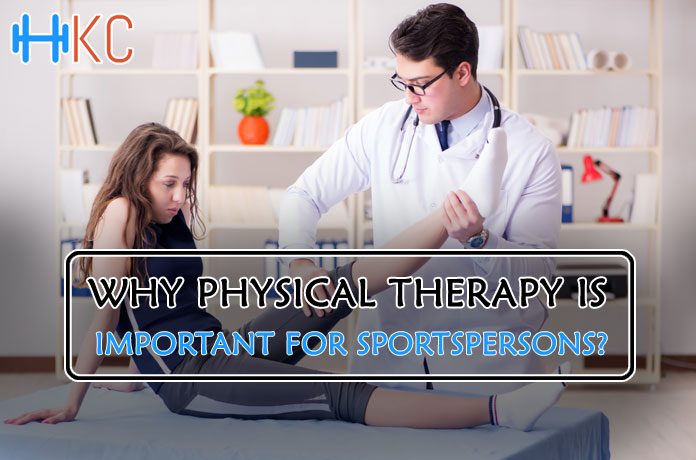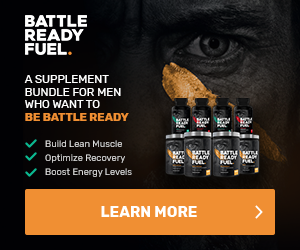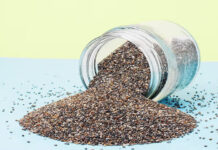WHY PHYSICAL THERAPY IS IMPORTANT FOR SPORTSPERSONS?
Sports is an active area of physical, mental and emotional engagement, where injuries come as an added element for any athlete, no matter what sport or fitness related activity they are engaging in. Hamstring strains, ankle sprains, and muscle tears are some of the common types of injuries that can be caused as a result of erratic or even regulated athletic activity.
There are a number of factors on which the condition and situation of sports injury depends, such as, fatigue due to over training, absence of conditioning, or say, a proper form or technique of a particular sports, and last but not the least, an improper warm-up schedule that not only hurts the body but makes your sports persona more prone to critical injuries and fatigues.
This is where the concept of physical therapy for athletes comes into play. Given the competitive nature of sports these days, athletes want to perform with flying colors on the field, and the threat of suffering injuries on the field can affect the morale of the player. Physical therapy seems like a plausible and organic option to deal with sports injuries on the field and off the field as well. In this article we will be discussing physical therapy in the backdrop of its utility for the players of the athletic arena.
PHYSICAL THERAPY & INJURED ATHLETES
The fundamental idea of sports injury physical therapy is to help the athlete regain strength and mobility in the affected/injured parts of the body during sports training or performance. Physical therapy also essentially known as sports medicine, helps in the recovery of muscle wear and tear, sprains and breaks, while conditioning the body’s motor response to have better immune response in case of future injuries.
Physical Therapy not only deals with the physiological aspect of the injury, but also the psychological and bio-mechanical aspect of it, while creating a deeper understanding of how your body works with you as you train it for your sport. The therapy takes a personalized turn in its course because each of our bodies are different in its own way. A generic plan does not do justice with the requirement and rehabilitation of the injured or fatigued muscles. Therefore, the therapists create a sports-specific or position-specific plan with specialized exercises to improve the player’s movement.
COMMON TYPES OF SPORTS INJURIES
In this section of the article, we will be enlisting some of the most common sports injuries, which are:
- Ankle Sprains – stretching or tearing of ankle ligaments when it is forced to move out of its normal position
- Groin Pulls – caused by the strain in the muscles of inner thighs. If tensed too forcefully or too suddenly, they can be overstretched or torn.
- Hamstring Strains – happens when one or more of the hamstring muscles in your posterior thigh compartment, gets stretched too far and is at the verge of tearing.
- Shin Splits – results when muscles, tendons and bone tissue are overworked during a training regime. Shin splints often occur in athletes who’ve recently swapped to an intensified training routine.
- ACL Injuries – It is a tear or sprain of the anterior cruciate ligament (ACL) of your knee. They most commonly occur during sports with sudden stops or changes in direction, jumping and landing.
- Tennis elbow – is an inflammation of the elbow joint caused by repetitive stress and fatigue on the lateral side of your elbow.
- Hip flexor strains – Happens due to fatigue in hip flex or muscles and tendons.
If you are suffering from any of the injuries listed above, your upcoming step has to be physical therapy to tone your body and muscles after the setback caused by injuries. Physical therapy gives your body a recovering and healing space, it requires as it undergoes the discomfort of the injury.
THE AFTERMATH OF INJURY WITH PHYSICAL THERAPY
As the athletes recover from the injury, they typically follow a personalized routine of rehabilitation exercises including recovery stretches which helps to tone the muscles hurt in the injury. The exercises are usually coupled with distinct rehab techniques of massage therapy, which with a repetitive frequency help the muscles strengthen their muscle fibers.
Physical therapy also increases their understanding of their own physiology, while managing pain with this personalised physical therapy. The player also gains insight of his/her physical limits and the practical approach of exceeding them without making your physiology vulnerable.
It also helps to shape your training regime as compared to other athletes who haven’t been hurt. Physical therapy lets your body buy an optimum amount of time for your recovery while keeping your steady pace towards your goal. The customized therapy will help the athlete with agility and strength in an overall manner and prepares your body for any future encounters with the same sort of injury.
WHAT HAPPENS IN A PHYSICAL THERAPY?
As your physical therapy starts, the therapists identify and understand the nature of the injury and it’s extent as they create a customized plan of physiological effort. This effort requires to be carefully and meticulously evaluated regularly, because injuries are dependent on the factor of time. This also helps the body to acquire a pattern of the healing process in a number of phases as follows:
- Acute Phase – It follows the acronym of R.I.C.E which means, Rest-Ice-Compression-Elevation. This phase mitigates the extent of inflammation.
- Sub-Acute Phase – This phase is all about the motion control training.
- Chronic Phase – This is a return to function phase which helps the athlete to transition to his/her pre-injury workout regime in a gradual manner.
WHAT TO EXPECT FROM PHYSICAL THERAPY?
Your first physical therapy appointment will have an eventful and thorough evaluation ranging from 30 to 60 minutes. This step helps your physical therapist with the analysis of your injury condition. The next step is to develop a plan of care based on the athlete’s goals and requirements during the recovery. A set of exercises are included in the plan to give them a kick start for the therapy. The subsequent steps include the reassessment of the plan on the basis of their response to the therapy to fill essential constructive voids.
There have been some instances where the initial stages have resulted in soreness, as the player is through the first few physical therapy sessions. The soreness will settle in as the body’s physiology acclimates with the momentum of the physical therapy. The reason for this soreness comes from the fact that the muscles which sat for a while during the injury reset with the therapy. This pain cascades away with time and therapy.
Physical therapy’s usual frequency is about two to three times per week and home physical therapy is essentially encouraged to tone and train the body after injury’s setback. This consists of exercises that the therapist assigns to patients to practice at home. Continuing their care outside of scheduled appointments keeps them on track to recover as quickly as possible.
BOTTOM LINE
Sports injuries can be easily prevented with the right warm up regime and relieving stretching exercises. However, at times, injuries might be inevitable, and for that scenario Physical therapy works the best.
Athletic trainers and physical therapists are continually trying to gain more insight into sports injuries and their prevention and diagnosis, as more and more people join the sector. Some procedures will be able to yield the right results with standard procedure, whereas some would require to change the means of addressing injuries.
















